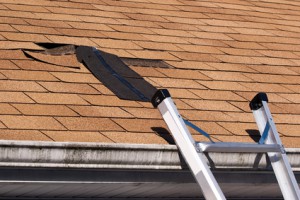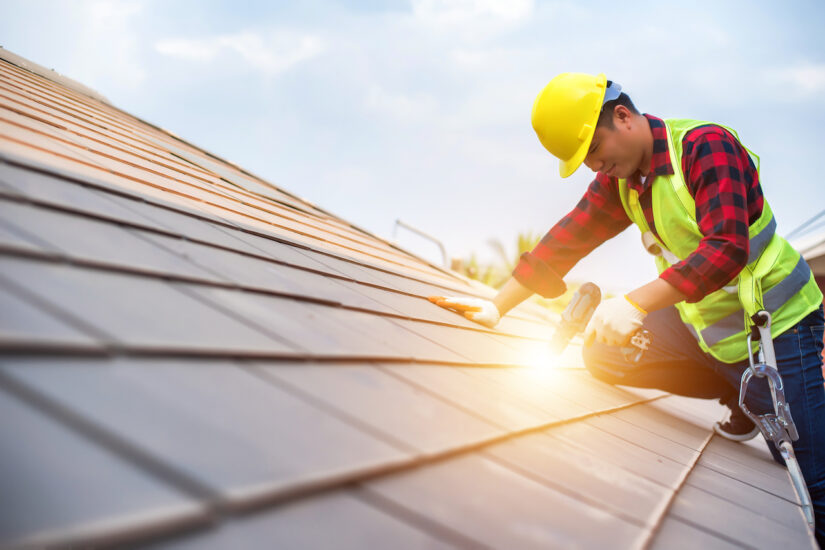Roofing Companies Oahu: Premier Roofers for All Roofing Projects
Recognizing the Different Sorts Of Roof Coverings: A Comprehensive Overview for Homeowners
In the world of homeownership, selecting the appropriate roofing style is a decision that brings considerable ramifications for both capability and aesthetic appeal. With a range of options-- ranging from the traditional gable to the contemporary level-- each type presents unique advantages and obstacles that need to straighten with the homeowner's environmental factors to consider and details requirements. Understanding these distinctions not just help in making an educated option yet additionally affects long-lasting maintenance and power performance. As we explore the ins and outs of various roofing types, it comes to be evident that dimension does not fit all; the appropriate selection may surprise you.
Gable Roofing Systems
Saddleback roofs, defined by their triangular form, are among one of the most popular roof covering styles because of their simpleness and performance in dropping water and snow. This design features 2 sloping sides that meet at a ridge, enabling effective water drainage and reducing the danger of water buildup. The steep pitch typically associated with saddleback roofs boosts their ability to manage heavy precipitation, making them ideal for different climates.
Along with their useful advantages, gable roofs use visual flexibility. They can be adapted to numerous building styles, from conventional to modern-day homes. The style can also accommodate extra functions such as dormer home windows, which improve natural light and ventilation in the attic area.
Additionally, saddleback roofs give ample space for insulation, contributing to energy effectiveness. Property owners can pick from a selection of roofing materials, including asphalt roof shingles, metal, and tiles, better boosting personalization choices.
Regardless of their benefits, saddleback roofs might need extra support in areas prone to high winds or hefty snowfall. In general, the gable roofing system stays a preferred option due to its blend of performance, longevity, and aesthetic charm.
Flat Roofs
Level roofs are frequently recognized for their minimal layout and useful applications, particularly in commercial and industrial settings (oahu roofing). These roofing systems feature a horizontal or virtually straight surface area, which permits for simple building and versatile room use. While they may do not have the aesthetic charm of angled roofs, flat roof coverings use various advantages, specifically in metropolitan environments where making best use of room is critical
One of the key benefits of level roofs is their ease of access. Property owners can make use of the roofing room for different purposes, such as roof gardens, balconies, or solar panel setups. Additionally, level roofing systems are typically a lot more affordable to mount and keep contrasted to their sloped counterparts, as they call for fewer products and labor.
However, flat roof coverings do present specific difficulties. Correct drainage is necessary to prevent water pooling, which can bring about leaks and structural damages. Hence, choosing premium waterproofing materials and routine evaluations are vital for ensuring durability. Usual products used for flat roof coverings include built-up roof (BUR), customized asphalt, and single-ply membrane layers, each offering distinctive benefits. Generally, level roof coverings serve as a functional and adaptable option for lots of home owners and companies alike.
Hip Roofings
Hip roofings are defined by their sloped sides that assemble at the top, developing a ridge. This layout is distinct from saddleback roofs, as all four sides of a hip roof covering incline downwards toward the wall surfaces, giving an extra steady structure. The angle of the slopes can differ, permitting convenience in architectural aesthetic appeals and capability.
Among the key advantages of hip roofings is their ability to withstand hefty winds and negative weather. The sloped surfaces make it possible for much better water drainage, lowering the danger of leakages and water damages. Additionally, hip roofs supply boosted attic space, which can be made use of for storage or even transformed into comfortable areas.
However, creating a hip roofing system can be more expensive and complex than simpler roof covering types, such as gable roofings. The additional product and labor involved in developing the slopes and ensuring proper structural honesty can lead to higher costs. In spite of these disadvantages, many home owners favor hip roofs for their durability, visual allure, and potential for energy efficiency.
Mansard Roofing Systems
Mansard roof coverings, typically identified by their unique four-sided layout, attribute two slopes on each side, with the reduced incline being steeper than the top. This building style, originating from France in the 17th century, is not only cosmetically attractive but practical, as it optimizes the usable space in the upper floors of a building. The high reduced incline permits more clearance, making it an ideal option for loft spaces or attic rooms, which can be converted into living spaces.
Mansard roofing systems are defined by their convenience, accommodating different architectural styles, from standard to contemporary. They can be created with different products, consisting of asphalt tiles, slate, or steel, giving homeowners with a check that variety of choices to fit their budget plans and choices. Furthermore, the style permits the combination of dormer windows, enhancing all-natural light and air flow in the upper degrees.
Nonetheless, it is important to take into consideration the possible downsides. Mansard roof coverings might need more maintenance due to the complexity of their layout, and their high slopes can be challenging for snow and rain overflow. Generally, mansard roofing systems combine elegance with usefulness, making them a preferred selection among homeowners looking for unique building functions.
Shed Roofs
As home owners progressively seek simpleness and capability in their building designs, lost roofing systems have emerged as a preferred choice. Identified by a solitary sloping plane, a shed roof presents a minimal aesthetic that matches various home designs, from contemporary to rustic.
One of the main benefits of a shed roof is its uncomplicated building, which usually translates to reduce labor and product expenses. This layout permits effective water drain, reducing the risk of leaks and water damages. In addition, the upright slope offers enough space for skylights, improving natural light within the inside.
Lost roofing systems also use versatility in regards to usage. They can be effectively incorporated into enhancements, garages, or outdoor structures like sheds and pavilions. Moreover, this roof style can fit different roof materials, consisting of steel, asphalt tiles, or also environment-friendly roofs, aligning useful link with eco-friendly initiatives.
However, it is important to think about local environment conditions, as hefty snow lots might demand changes to the roof covering's angle or framework. In general, shed roofing systems present a practical and visually pleasing choice for house owners seeking to make the most of functionality without endangering design.
Conclusion


Gable roofing systems, characterized by their triangular shape, are amongst the most preferred roofing styles due to their simpleness and efficiency in dropping water and snow. oahu roofing. The high pitch typically connected with gable roofings boosts their capability to deal with heavy rainfall, making them appropriate for different environments
While they might lack the aesthetic charm of pitched roofing systems, level roof coverings provide many benefits, specifically in city environments where taking full advantage of area is critical.
